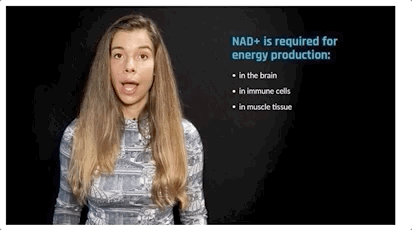What is the "master clock" or Suprachiasmatic Nucleus? | Satchin Panda
Get the full length version of this episode as a podcast.
This episode will make a great companion for a long drive.
The Omega-3 Supplementation Guide
A blueprint for choosing the right fish oil supplement — filled with specific recommendations, guidelines for interpreting testing data, and dosage protocols.
The body's circadian system is composed of multiple "clocks" that are present in all cells. These clocks orchestrate the regulation of gene expression that coordinates essential metabolic processes. The body's master clock is located in the suprachiasmatic nucleus, or SCN, a tiny region of the brain located within the hypothalamus. The SCN, in turn, coordinates the body's peripheral clocks, such as those found in the liver, pancreas, muscles, and fatty tissue, driving rhythms of rest and activity that determine eating-fasting cycles. Damage to the SCN, such as would occur in Alzheimer's disease or other neurodegenerative processes, can dysregulate the body's normal responses to light, darkness, and food intake. In this clip, Dr. Satchin Panda explains the role of the suprachiasmatic nucleus – the body's master clock – and how it affects metabolism.
Rhonda: You've done a lot of research on what regulates these different clocks.
Satchin: Yeah.
Rhonda: There's a master regulator clock, and there's other clocks in different organs. Maybe you can explain. I read somewhere that something between 10% to 15% of the entire protein-coding human genome is actually regulated by these circadian clocks, and anywhere between around, like, 40% to 50% of those genes are actually involved in metabolism.
Satchin: Yeah.
Rhonda: So, there's, there's a wide variety of processes that are regulated by these clocks.
Satchin: Yeah.
Rhonda: Maybe can you explain a little bit about the central master clock and...
Satchin: Yeah.
Rhonda: ...what regulates that?
Satchin: [laughs] Yeah. So this is a field of study that is actually not driven by a disease but pure curiosity. So for a long time, people thought that there might be a master clock in the brain because we always connect circadian clock to sleep-wake cycle. And fortunately, there was actually a master clock. And in fact, almost 40, 45 years ago, people who are working on different parts of the brain…because at that time, 40 years ago, people thought that different parts of the brain regulate different behavior. So they are defined like cubic millimeter area of brain that regulates something.
So we're systemically taking out parts of the brain in mouse, rodents, and different larger rodents, and then figure out that when they hit this small part of the brain called suprachiasmatic nucleus, so that means we know that our eyes send optic nerves that crisscross and there is a part of the brain called optic chiasma, so it's above the optic chiasma. So that's why suprachiasmatic nucleus. So that's...
Rhonda: Say that 10 times fast. [laughs]
Satchin: Yes [laughs]. Suprachiasmatic nucleus or SCN, it's composed of around, say, 100,000 neurons, I guess, in humans, really small, maybe one millimeter by one millimeter. That's the size of this brain part. If you remove that brain part in a hamster, then this hamster doesn't, will not have any sense of time and go to sleep at random time and will wake up after two or three hours and it continues. But what is most exciting is if we take SCN from another hamster and transplant, it's like a brain transplant experiment, then this hamster will get all the rhythms back.
That's the earliest example of neural transplant transferring behavior from one animal to another animal. And that essentially established that there is part of the brain that accesses master circadian oscillator or circadian clock because it orchestrates this daily rhythm in waking up and going to sleep. And just imagine, only when we are awake, we eat, or we exercise. So that's why all other organs related to eating, for example, our gut, our liver, our fat, all of them are driven by this feeding behavior. Similarly, our muscle is driven by when we run. So that's how the SCN acts as the master circadian oscillator. So if we damage the SCN then we lose all circadian rhythm.
So what happens in some of the neurodegenerative disease, like very advanced stage of Alzheimer's disease dementia, if the SCN, this part of the brain is affected, then people lose their sense of time in terms of when they go to bed or when they stay awake. So this presents slowly, they turn into a state where they don't have a sense of day or night. They stay awake throughout the night and may be sleepy throughout the day. So that's why this master clock is so much important for our health.
Rhonda: And that might also have a feed-forward loop because then, you know, if your master clock is thrown off and you're awake when you're supposed to be sleeping and sleeping when you're supposed to be awake, that's also been shown to affect hippocampus and long-term potentiation. So, you know, you've got this, sort of feed-forward loop.
A neurodegenerative disorder characterized by progressive memory loss, spatial disorientation, cognitive dysfunction, and behavioral changes. The pathological hallmarks of Alzheimer's disease include amyloid-beta plaques, tau tangles, and reduced brain glucose uptake. Most cases of Alzheimer's disease do not run in families and are described as "sporadic." The primary risk factor for sporadic Alzheimer's disease is aging, with prevalence roughly doubling every five years after age 65. Roughly one-third of people aged 85 and older have Alzheimer's. The major genetic risk factor for Alzheimer's is a variant in the apolipoprotein E (APOE) gene called APOE4.
The body’s 24-hour cycles of biological, hormonal, and behavioral patterns. Circadian rhythms modulate a wide array of physiological processes, including the body’s production of hormones that regulate sleep, hunger, metabolism, and others, ultimately influencing body weight, performance, and susceptibility to disease. As much as 80 percent of gene expression in mammals is under circadian control, including genes in the brain, liver, and muscle.[1] Consequently, circadian rhythmicity may have profound implications for human healthspan.
- ^ Dkhissi-Benyahya, Ouria; Chang, Max; Mure, Ludovic S; Benegiamo, Giorgia; Panda, Satchidananda; Le, Hiep D., et al. (2018). Diurnal Transcriptome Atlas Of A Primate Across Major Neural And Peripheral Tissues Science 359, 6381.
A general term referring to cognitive decline that interferes with normal daily living. Dementia commonly occurs in older age and is characterized by progressive loss of memory, executive function, and reasoning. Approximately 70 percent of all dementia cases are due to Alzheimer’s disease.
A small organ located within the brain's medial temporal lobe. The hippocampus is associated primarily with memory (in particular, the consolidation of short-term memories to long-term memories), learning, and spatial navigation. Amyloid-beta plaque accumulation, tau tangle formation, and subsequent atrophy in the hippocampus are early indicators of Alzheimer’s disease.
The long-lasting strengthening of synapses (connections) between nerve cells. LTP is associated with the learning and memory functions of the hippocampus and other structures in the brain. It allows nerve cells that fire in a correlated manner in a given activity to increase their connection strength with each other, while decreasing the strength of connectivity between neurons that do not take part in the activity.
The thousands of biochemical processes that run all of the various cellular processes that produce energy. Since energy generation is so fundamental to all other processes, in some cases the word metabolism may refer more broadly to the sum of all chemical reactions in the cell.
A broad range of disorders caused by the progressive death of neurons in the central and peripheral nervous systems. Common neurodegenerative diseases include Alzheimer's disease, Parkinson's disease, Huntington’s disease, and multiple sclerosis. Although treatments are available for some neurodegenerative diseases, there are currently no cures.
A tiny region located in the hypothalamus responsible for controlling circadian rhythms. The SCN maintains control across the body by synchronizing "slave oscillators," which exhibit their own near-24-hour rhythms and control circadian phenomena in local tissue.
Member only extras:
Learn more about the advantages of a premium membership by clicking below.
Get email updates with the latest curated healthspan research
Support our work

Every other week premium members receive a special edition newsletter that summarizes all of the latest healthspan research.
Circadian rhythm News
- Immunochemotherapy given earlier in the day linked to longer survival in people with advanced small cell lung cancer.
- Long-term exposure to bright, artificial night light linked to increased risk of overweight and obesity in schoolchildren.
- Regular cannabis use during adolescence may be linked to long-term insomnia risk.
- Consistency in daily activity rhythms can enhance cardiorespiratory fitness and walking efficiency up to 20% in older adults.
- Working night shifts and accumulating sleep debt increase nurses' susceptibility to illnesses, with risk escalating by nearly 50% for frequent night shift workers.






